Lateral approach to the distal humerus
1. Introduction
The lateral approach to the distal humerus may be used for access to:
- Isolated lateral condyle fracture
- Lateral epicondyle avulsion fracture
- Coronal shear fractures of the capitellum or trochlea
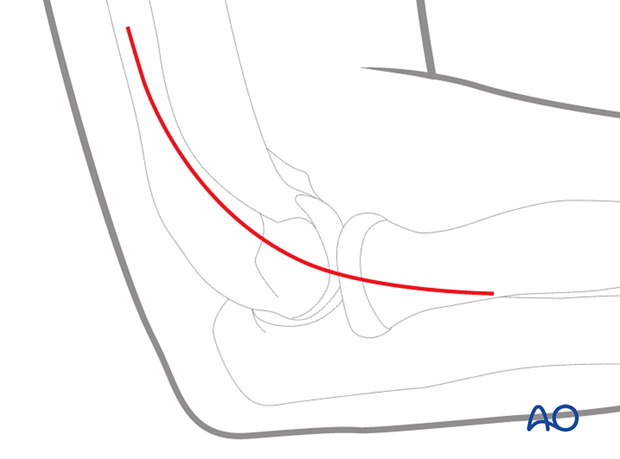
2. Skin incision
The skin incision is centered over the lateral epicondyle. Proximally it can be extended along the lateral supracondylar ridge up until the radial nerve. Distally it is extended in the line of the radial head along the common extensor muscles.
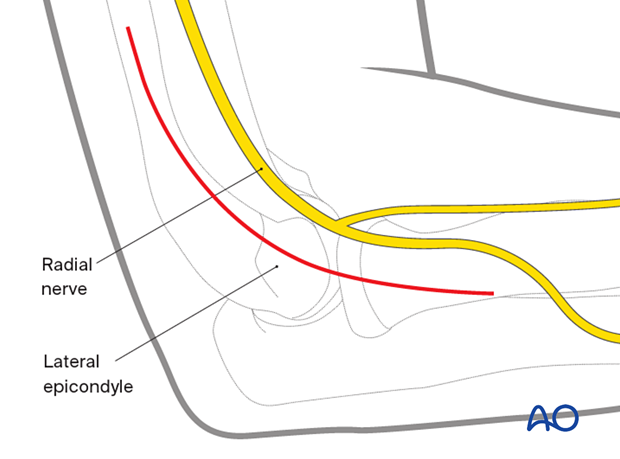
3. Deep dissection
Incise the deep fascia in line with the skin incision.
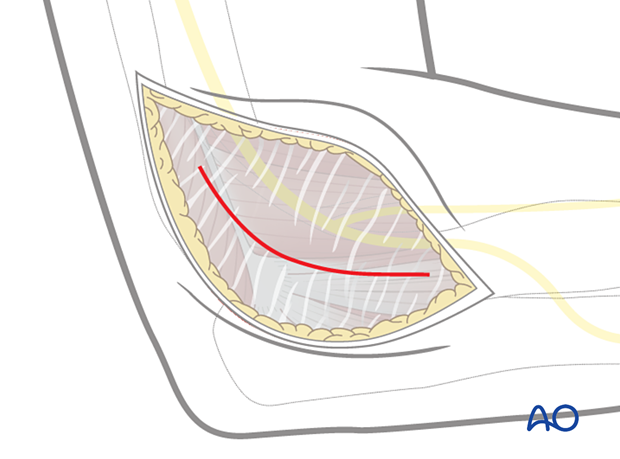
Proximally elevate the muscles and capsule subperiosteally from the lateral supracondylar ridge.
Distally split the common extensor muscles anterior to the lateral collateral ligament. This structure can be protected by splitting the muscles anterior to the equator of the radial head.
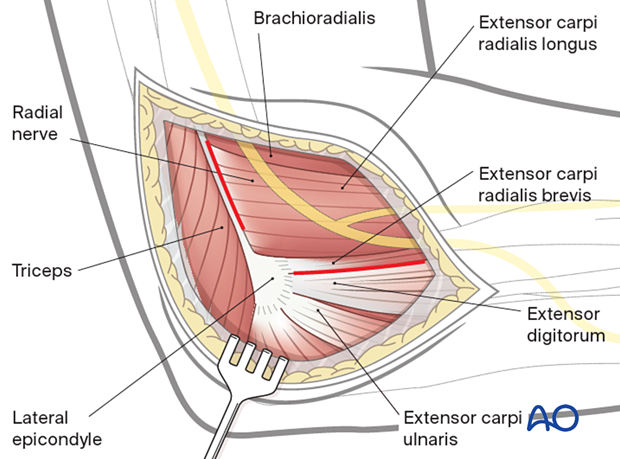

4. Further exposure
If access to the posterior aspect of the lateral column is required, then elevate the lateral triceps and anconeus from the posterior aspect of the distal humerus. Take care not to divide the lateral collateral ligament in the distal part of the deep dissection.
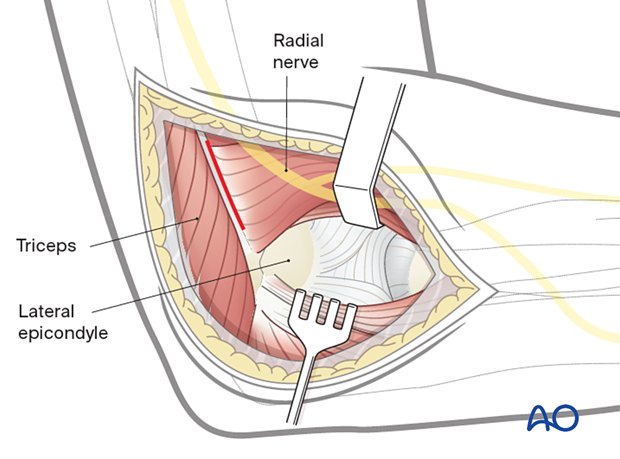
For complex capitellar and trochlear fractures, the exposure can be extended by:
- Performing a lateral epicondyle osteotomy
- Reflecting the humeral attachment of the lateral collateral ligament
- Exploiting an epicondyle fracture to reflect the lateral collateral ligament (common fracture fragment in coronal shear fractures)
This allows subluxation of the distal humerus and hinging open of the joint around the intact medial collateral ligament.
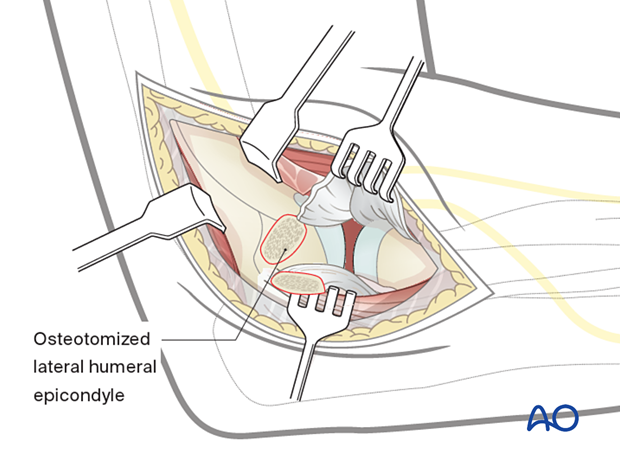
5. Wound closure
Close the wound in layers.
It is essential to repair the lateral collateral ligament or epicondyle at the end of the procedure to prevent posterolateral rotatory instability.













